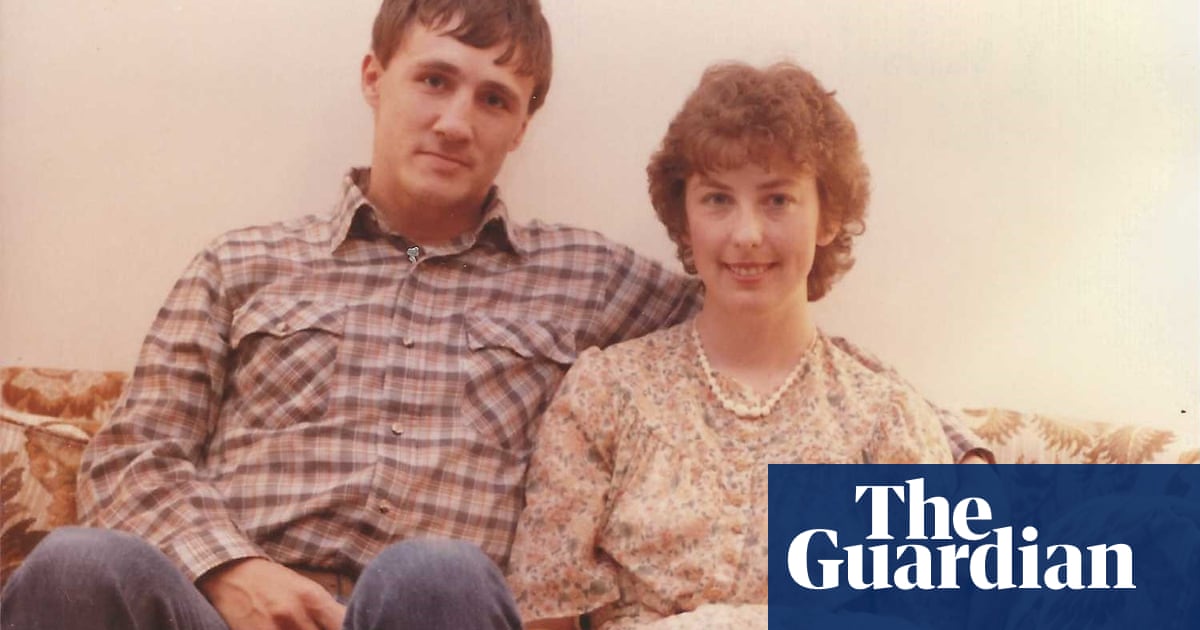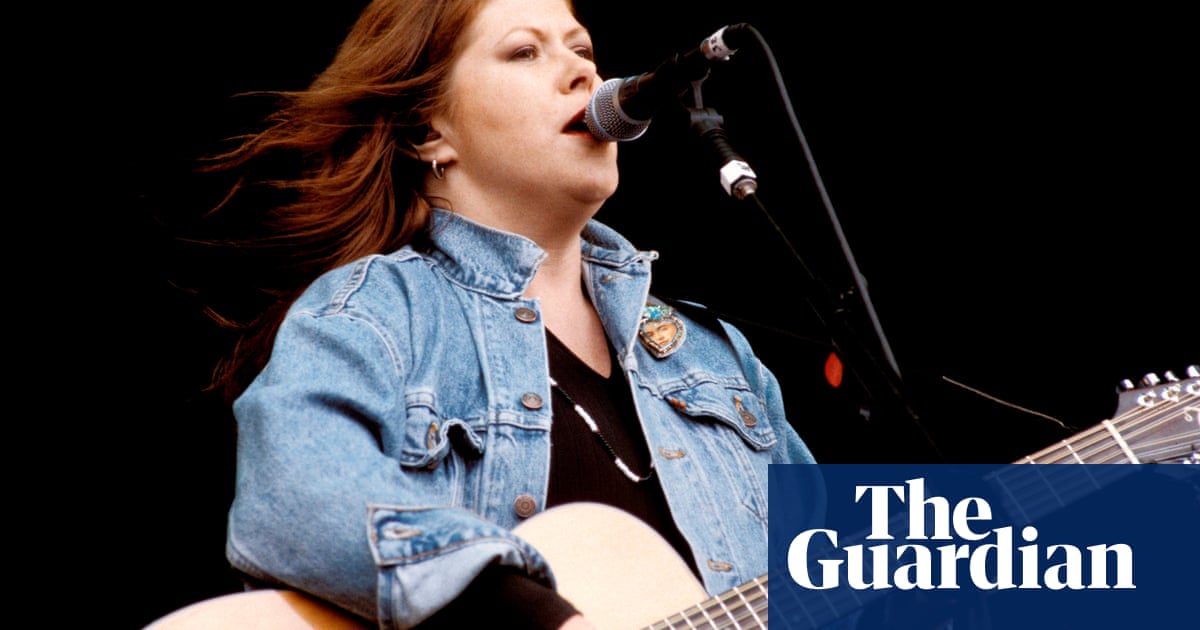
The saying goes that pop stars are forever frozen in time at the age they became famous. Despite the lasting iconography of the schoolgirl outfit she wore in the video for her debut single, 1998’s … Baby One More Time, this has somehow never felt true of Britney Spears, whose first four albums painted a convincing picture of evolving girlhood.
She was naive and lovestruck on her 1999 debut, and gained power and self-awareness on 2000’s Oops! … I Did It Again. Released in 2001, Britney was the first album that Spears, then 19, co-wrote: it juxtaposed her sexuality (I’m a Slave 4 U) with her frustration at being treated like a child (I’m Not a Girl, Not Yet a Woman). Two years later, In the Zone revelled in eroticism and experimentation, reflected in a more adventurous sound.
She had to drag baggage between eras – the cruel virginity myth she was lumbered with on her debut, a split from Justin Timberlake in which he revelled in retaining the upper hand – but to girls like me growing up in Britney’s immediate wake, her music and pop persona seemed like logical dispatches from the defiant, empowered, gleefully horny path that lay ahead.
There are debates on how much of this came from Britney. Fans are understandably keen to attribute her with agency. She co-wrote some of the songs. She was also the product of an unbeatable machine. Jive A&R man Steve Lunt claimed that producer Max Martin said of Britney, “She’s 15 years old; I can make the record I really want to make and use her qualities appropriately, without her telling me what to do,” as he told The Song Machine author John Seabrook. But were it not for Britney’s suggestion to set the … Baby One More Time video in a high school, who knows if it would have become a sensation.
I was nine when Britney arrived. She was my first example of pop’s potential for reinvention, and she was intoxicating: I remember first hearing Oops …! in a Tesco car park with the same lightning-strike wonder many fiftysomethings felt seeing Bowie doing Starman on Top of the Pops. But certainly by the time we reached the age she was when she debuted, the seams had started to show. How she lived as a young woman in her mid-20s was clearly at odds with the tidy, sellable record-label ideal: a little reckless, her clothes and makeup party-rumpled as she finally enjoyed the freedom she had been denied as a hothoused teenage pop star.
Like any inexperienced reveller, she slipped, and her transgressions were magnified against her stage-managed pop evolution by a brutal media. She married young – as some have pointed out, not unusual for a working-class girl from the south. Her first marriage, a Vegas do, was annulled after 55 hours, a mess safely cauterised. Her second produced two children in 12 months. She filed for divorce two months after the latter’s birth.
That life change would rattle anyone’s foundations, let alone Britney, left ill-equipped for the realities of womanhood after being used to perpetuate the myth of how the American girl should age, incrementally unfolding her nubility to exploit maximum commercial gain from each tantalising stage.
By 2007, Britney was off-script. She didn’t seem to care; she seemed energised by the revulsion, or at least intuited that it was the only form of agency she had as paparazzi swarmed and pearls were clutched; it also seems quite possible that she was experiencing mental health issues. She started to seem bracingly real to her younger followers again: a nice girl out of bounds, embodying the ultimate transgression, destruction of her potential, her beauty, her capital; no longer concealing her damage.
When Britney asked a Los Angeles hairdresser to shave her head, the stylist refused and tried to talk her out of it – perhaps conscious she could be done for vandalising property – so Britney did it herself. The chaos produced her best album: Blackout, an elusive, abrasive pop wasteland.
But this is where Britney’s growth in the public eye ends, with her 2008 breakdown and the institution of the conservatorship that has restricted her life for the past 13 years, run by her father Jamie. In the intervening years, Britney’s evolution – as a musician, and a woman navigating her 30s – has stalled. Her pop releases felt mostly holographic; her public appearances more restricted than they were in her teens.
In February, after the New York Times documentary Framing Britney Spears reinvigorated conversation around the conservatorship, philosopher Dr Robin James tweeted that the arrangement was “about legitimacy. It’s like some weird neo-feudal device that ties Britney™ the asset back to the white patriarchal nuclear family”. Her theory doesn’t seem far-fetched. The only growth that appears to matter to the conservatorship’s managers is maintaining commercial viability.
As she petitioned a court to release her from the conservatorship, Britney said she was made to work against her will, and threatened with curbs on her freedom if she objected. Her most distressing allegation was that she was not allowed to remove her IUD in order to have another child with her partner of five years, Sam Asghari; nor is she allowed to marry him. She is 39 years old. Her prime has been exploited, stolen and may yet be squandered if she can’t escape the conservatorship or change its terms.
I don’t think I can yet fully parse why it was so devastating to hear her say this in the final minutes of her testimony, other than that Britney is a woman kept behind glass, frozen in time at the age of her first deviation from the script. It feels somehow personal: forever bound to her most visible mistake, it exposes the illusion of agency gained that we were sold; that evolution remains governed by proprietorial limits. Her denied potential is like an egregiously brutal conclusion of the planned obsolescence built into women’s pop careers.
At least during Britney’s 25 minutes on the phone to the court we got to hear her life force seething to get out. Her torrential evidence-giving broke a bottleneck of anger, trauma and resentment. Despite everything she has endured, her spirit was intact: she was seething, sharp, hurt, even funny. “I don’t even drink alcohol,” she said of being sent to rehab in 2019. “I should drink alcohol, considering what they put my heart through.”
She asked for a therapist to come to her house to save her the indignity of being photographed crying outside their public office. “Because I actually know I do need a little therapy,” she laughed. Who wouldn’t after what she has been through? The (trivialising) meme goes that if Britney survived 2007, you can handle today. That she has survived and created foundations for herself over the past 13 years seems miraculous.
The next hearing in Britney’s case is 14 July. Whether she succeeds in ending the conservatorship, or at least having her father removed as co-conservator, remains to be seen. The processes that brought her here will hopefully one day be interrogated as thoroughly as their subject’s life has been. What is certain is that her voice retains its potential to define a new era for her – an evolving picture of life lived on her terms.












